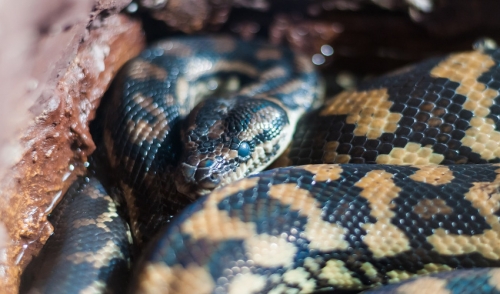10 Symptoms of Diabetes in Dogs
Diabetes can be a challenging condition to manage, especially in pets that cannot verbally communicate how they feel. Recognizing the symptoms of diabetes in...

Giving your pet the best habitat possible should always be number one as a pet owner. If your pet is a snake then this article is for you. Owning and caring for a snake is a big commitment and requires a unique habitat in order for the snake to grow and thrive. Over time, this commitment will only grow depending how much the snake grows. There are many different species of snakes and each have their own specific habitat requirements. Therefore, make sure to speak to your breeder or local pet store about specific adjustments that need to be made for your snake. Take a dive into this article to learn about the common requirements and supplies needed to properly care for your snake and to give it the best habitat possible.
Start with choosing the right cage or tank for your snake. Snakes grow really fast. Opt for a terrarium that will be large enough for your breed of snake. Small snakes should be placed in a terrarium that is 10-20 gallons large in size and for other species such as king snakes the structure should be approximately 30-55 gallons. For some species such as the python or boa, you may want to look into building a custom structure or something fairly large. After picking the right terrarium, add the right light or heat sources to help regulate your snake’s temperature. The temperature within your snake’s environment is important to the overall health of the animal. Different species require different temperature requirements, but your terrarium must maintain a certain gradient to keep your snake healthy. Since snakes thermoregulate, heat up your cage by using a series of incandescent lights, nocturnal incandescent lights at night, tank heaters, and ceramic heat emitters. If it’s a very large space, feel free to use a space heater outside to help maintain internal temperatures. To create even hotter temperatures in certain areas of the cage, use basking lights to create a hot spot for your snake to relax in. In addition to the incandescent lights, make sure to use full spectrum fluorescent lights to provide UVB light that will help promote Vitamin D3 synthesis. Always measure the humidity of the tank using a hygrometer to make sure the humidity is at the right level for your snake. Depending on what your snake needs, you may need to add a mister or fogger to keep the environment moist. Finally, add substrate, plants, and decorations to further institute a healthy habitat for your snake. Some everyday substrates for snakes include newspaper, butcher paper, and cypress mulch. Other common decorations and accessories for snakes include a water bowl, a hide spot, rocks, and branches. The rocks and branches will give your snake something to rub against when shedding its skin.
Again, giving your snake the best habitat will be largely dependent on the type of species it is. Make sure to consult with the breeder or your local pet store to give your snake the best terrarium set up possible.
We are constantly adding new specials to our site. Be sure to check back often!
We currently do not have any events scheduled.

Diabetes can be a challenging condition to manage, especially in pets that cannot verbally communicate how they feel. Recognizing the symptoms of diabetes in...
Comments